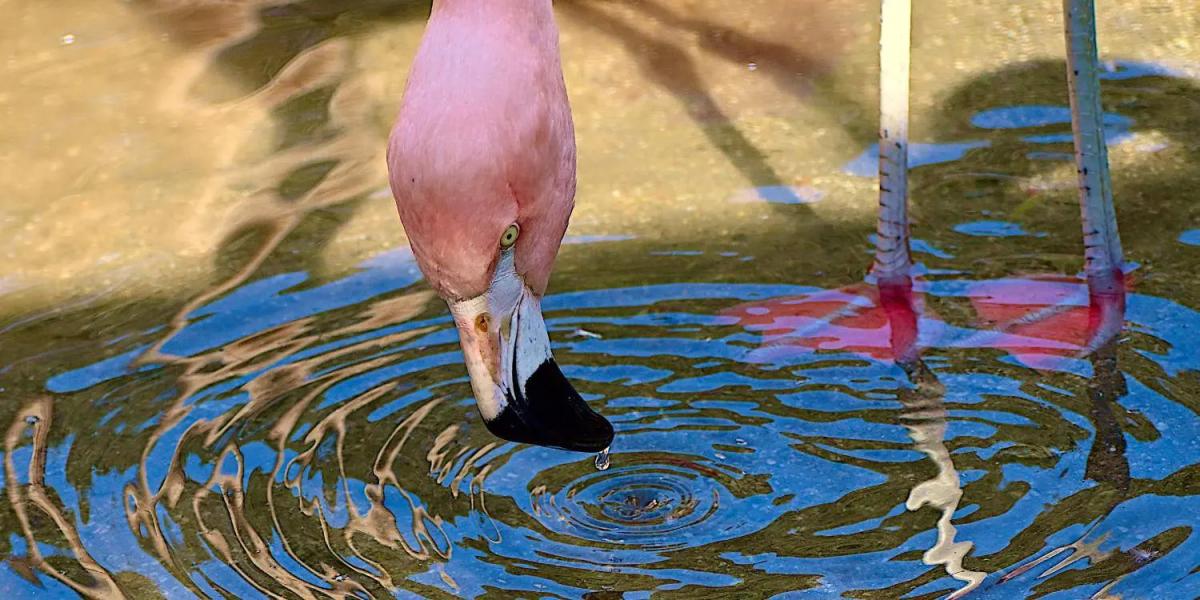The findings could inspire engineers to create more efficient filtration systems to fight pollution or toxic algae.

A new study that better understands how a flamingo uses its mouth and stomps its feet while eating could lead to better water filtration systems.
The study found that the long-legged birds create mini tornadoes while eating upside down. Flamingoes do it by chomping their mandibles, bobbing their head up and down, and marching back and forth to push water into their mouth.
The bird is able to pick out its prey in the swirling vortices, even if the water is muddy or dirty.
Georgia Tech researchers partnered on the project with the University of California Berkeley, Kennesaw State, and the Nashville Zoo.
“Flamingos are more than passive filter feeders — they’re active hunters,” said Saad Bhamla, an associate professor in Georgia Tech’s School of Chemical and Biomolecular Engineering. “They create swirling vortices with their beaks and stomp out whirlpools with their feet to trap prey, all while feeding upside down with their beaks pointed backward.”